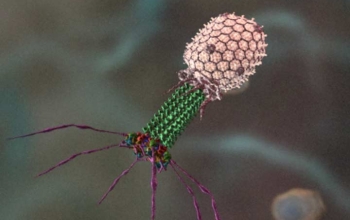ORGANIC FARMING
· Organic farming is a type of farming system which was used to increase productivity with minimum reliance on chemicals, while at the same time conserving resources.
· Organic farming nurtures the soil rather than just a particular crop.
· In Organic farming, the use of synthetic chemicals is minimized. There is a greater reliance on conservation and use of all resources available on the farm, including animal, human, and plant wastes.
· The goal of organic farming is to achieve stability without sacrificing high production and without polluting water, soil, and air.
COMPOSTING
· Composting is the controlled aerobic biological decomposition of organic matter into a stable, humus like product called Compost.
· Composting is a big chemical process in which microorganisms decompose organic waste matters like crop residue, kitchen wastes and cow dung into a soil improving product.
· The final product of Composting is a uniform, black mass of rotten, nutrient rich manure.
· Composting is essentially the same process as natural decomposition except that it is enhanced and accelerated by mixing organic waste with other ingredients to optimize microbial growth.
· Composting making is one of the most effective processes for recycling organic wastes intended for use in agriculture. It is a natural process that turns the waste material into a valuable natural fertilizer.
Composting methods
1) Windrow method
2) Aerated static pile
3) Box composting
4) Pit composting
5) Vermicomposting
Substrates used for Composting
· The best compost is a mixture of “green” and “brown” materials.
· “Greens” are young, sappy materials that rot quickly and are high in nitrogen, like:
ü Grass clippings
ü Poultry manures
ü Young weeds and plants
ü Fruits and Vegetable craps
ü Fish meal
ü Coffee grounds
ü Alfalfa meals
ü Tea bags and Tea leaves
ü Cut flower
ü Soybean meal
ü Bedding from Herbivorous pets
· “Browns” are organic materials made from tougher materials, have usually dried, and are high in carbon, like:
ü Fall leaves
ü Old straw
ü Wood chips
ü Twigs
ü Saw dust
ü Cardboard
ü Egg shells
ü Paper/Paper bags
ü Tree bark
· Experts suggest a 30:1 ratio of carbon to nitrogen organic materials when making compost.
Composting process
1) Preparation of pots or cement tanks
2) Addition of substrates or waste materials (Waste should be used in single or double or triple for composting)
3) Inoculation of Microorganisms.
4) Composting of wastes for 90 days.
5) Checking of various parameters during Composting at 30 days interval for 90 days (30th Day, 60th Day and 90th Day).
6) During Composting, special care should be taken to prevent the compost tank from various insects and pests.
Parameters to be checked during Composting
1) Temperature, pH and Moisture
2) Organic carbon content (Before composting high & after composting becomes low)
3) Nitrogen content (Before composting low & after composting becomes high)
4) Phosphorous content (Before composting low & after composting becomes high)
5) Potassium content (Before composting low & after composting becomes high)
6) Enzymes content (Before composting low & after composting becomes high)
7) Minerals content (Before composting low & after composting becomes high)
8) Cellulose content (Before composting high & after composting becomes low)
9) Hemicellulose content (Before composting high & after composting becomes low)
10) Lignin content (Before composting high & after composting becomes low)
Advantages of Composting
1) Supplies nutrients.
2) Improves microbial activity, which helps release soil nutrients for use by plants.
3) Reduces the need for chemical fertilizers which are costly and potentially damaging to the environment.
4) Increases the amount of organic carbon and nitrogen, improving physical properties of soil and allowing higher response to chemical fertilizers and higher crop yields.
5) Improves soil structure, improving drainage and making tillage easier.
6) Increases the water-holding capacity of soil.
7) Helps check wind erosion by improving soil structure.
:max_bytes(150000):strip_icc():format(webp)/portrait-of-louis-pasteur-in-his-laboratory-517443464-5c897947c9e77c00010c2303.jpg)







